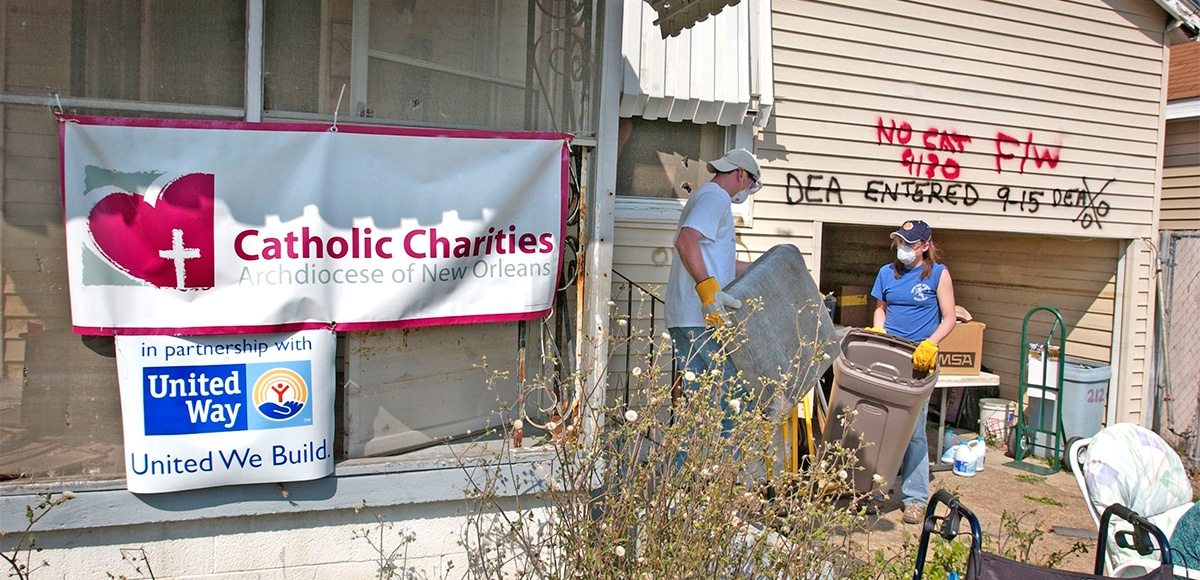By Michelle Krupa, CNN
Updated 7:49 AM ET, Thu September 20, 2018
Editor’s note: This story, first published during the 2017 hurricane season, has been updated to reflect challenges Hurricane Florence survivors will also face.
And now, it’s a sodden heap of decay. A balance-sheet liability. And it’s one of tens of thousands of properties just like it devastated by disastrous floods, wind and rain swept in by Hurricane Florence.
First among the many steps of rebuilding is gutting this house — hauling out every potentially poisonous artifact of a once-stable life. It’s a disgusting, sometimes dangerous job that experts say is best done by professionals. But that’s expensive, and when entire communities lie in ruins, there are never enough contractors to do the work.
So, relatives and neighbors and faith-group volunteers join forces to get it done sooner than later, before the damage worsens. And with each whack comes the realization that some lives won’t ever be the same.
STEP 1: Rounding up volunteers and supplies
Gutting a badly inundated, 1,500-square-foot house packed with stuff is likely to take 12 workers about three days, said Kevin Fitzpatrick, who managed the clearing-out and internal demolition of dozens of homes after Hurricane Katrina for Catholic Charities of the Archdiocese of New Orleans. Manpower, tools and gear could come free — or cost hundreds of dollars or more.
Before they start, they all need tetanus shots, goggles, hats, boots, gloves and masks certified to block mold spores, he said. They need crowbars and push brooms, plus hammers to yank every tiny nail from the studs, snow shovels to scoop up the detritus and wheelbarrows to cart it away.
And even after cracking the windows, the swampy stench of rotting wood, spoiling food and budding mold could drive eager helpers right back out the door.
STEP 2: Deciding what stays and what goes
Everything inside this house — socks, couches, detergent bottles, the refrigerator
and its contents, dog toys, televisions, forks and spoons, dressers, cereal boxes, wedding albums and baby books, LEGO sets, the piano — may have to go.
Objects big and small must be assessed.
STEP 3: Staying strong
Aside from the work being filthy and tedious, sorting through all these things can beget fresh anguish for someone who just survived a disaster.
Sometimes, it’s just too much; survivors quit trying. After flooding two years ago in Baton Rouge, Louisiana, volunteer Sara Johansen crawled under a stranger’s staircase to rescue a white ceramic Christmas tree.
“Here’s this one thing,” she said, “the one thing that can help them get through it.”
STEP 4: Demolishing
After a house is emptied, its contents piled in a heap at the curb, demo can begin. It’s another tough task, perhaps less sensitive than discarding mementos but hardly easier. And because nature took a swipe first, this job isn’t like it looks on HGTV, McDonald said.
Turn off utilities so a careless mallet swing doesn’t usher in a fresh mess — or worse. Sand or mud, if it seeped in, has got to be cleared, ideally before it hardens into a thick, dusty cake. Wet carpets and pads — all immensely heavy — must be torn out, along with wood floors, which might have warped into ribbons 4 feet high.
Drywall, cabinets and insulation must be cut out several inches above the visible mold line; sometimes, the ceiling has to go, along with electrical wires and pipes. And every surface underneath should be disinfected to prevent fungus, bacteria and other toxins from growing back.
After all this grueling work, a home may well end up stripped to its bones.
STEP 5: Stepping back
Seeing a house like that can be numbing. But it also can be liberating — a baptism, of sorts, for life after the disaster.
“This was cathartic, in its way. It was almost like a coming together for a funeral,” recalled John McCusker, whose colleagues helped him gut his home after Katrina.
“This was clearly an end of something, but it was also the first acknowledgment that life was going to go on,” he said. “It was the first time we really felt like that: I’ve cried enough, and we’re going to step forward now.”






